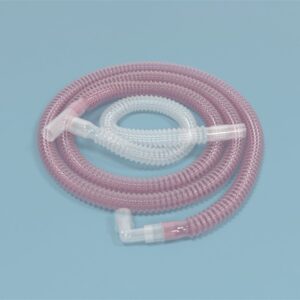$1,590.00
The zebrafish social interaction arena facilitates the investigation of zebrafish’s tendencies towards exploration and social engagement. Inspired by the design of the three-chamber sociability apparatus utilized in rodent studies, the zebrafish social interaction arena offers a novel approach to understanding social behaviors in aquatic organisms. With its five-chamber configuration, this innovative tank enables comprehensive analysis of fish socialization patterns through opportunities for interaction with social stimuli and exploration of the tank environment.

MazeEngineers empowers preclinical neuroscience research with meticulously designed, customizable behavioral apparatuses. From manual classic mazes to fully automated smart systems, we provide the tools scientists need to capture high-quality, reproducible data for studies on learning, memory, anxiety, and depression.



Features |
Tank size: 40cm x 25 cm x 20cm |
5 chamber divisions - transparent |
Starting area: 5cm x 5cm black box with guillotine door |

Individuals exhibit varying exploration and shoaling behaviors influenced by their unique behavioral profiles and personality traits. The sociability chamber serves as a valuable tool for investigating how similar species respond differently under comparable conditions based on their personality types. These conditions encompass responses to specific drugs, challenging environments, drug addiction, or the onset of disorders.
Comprising five chambers, the zebrafish sociability tank is structured to facilitate comprehensive observation. The initial chamber serves as the “starting box” for the subject, while the fifth chamber houses the shoal tank containing social stimuli. Exploration behaviors are predominantly observed in the first, second, and third chambers, whereas socialization behaviors are focal in the fourth and fifth chambers. Other equipment utilizing the zebrafish model includes the Zebrafish Environmental Enrichment Chamber, the Zebrafish 5 Choice, and the Zebrafish Y-maze.
The experiment utilizes tanks measuring 90 x 45 x 30 cm for housing the subjects. Environmental enrichment is achieved by incorporating various elements, including fine-grain gravel, upturned black plastic pots (10 cm in diameter) for shelter, plastic plants ranging from 12 to 30 cm in height, and novel objects such as differently colored plastic plants and grey PVC pipes (3 cm in diameter).
To assess flexibility, two types of partitions are employed: one with a 5 cm wide exit hole and another with tube access leading to the exit hole.
The sociability chamber comprises a rectangular, transparent acrylic tank divided into five sections by clear acrylic walls, with dimensions of 40 cm x 25 cm x 20 cm. The initial chamber features a 5 cm x 5 cm black box equipped with a guillotine door to regulate fish movement in and out. In the fifth chamber, a shoal tank is positioned to accommodate social stimuli.
Clean the apparatus thoroughly before starting the experiment. An external tracking and recording systems such as Noldus Ethovision XT can be used with the zebra sociability chamber for recording the fish activity.
Move the subject from the original tank to the designated black box within the initial chamber of the sociability tank. Close the guillotine partition securely and allow the fish to remain in the first chamber for a duration of 60 seconds. Following this period, gradually raise the partition by up to 2 cm, granting the fish passage to navigate through the chambers for a period of 10 minutes. Repeat this sequence for each subject individually.
Araujo-Silva, Pinheiro-da-Silva, Silva, and Luchiari (2018) investigated the individual differences and behavioral changes in zebrafish (Danio rerio) after alcohol exposure. The subjects were categorized widely as bold and shy. Six subject groups were formed including 3 groups of bold fish and 3 groups of shy fish. After 14 days of habituation, the subjects were exposed to 0.0%, 0.1% and 0.5% v/v% of alcohol for 60 minutes. The subjects were then transferred to the sociability chamber where zebrafish conspecifics were present as social stimuli. Results revealed that in control groups, shy fish socialized more than exploring the tank while bold fish explored more instead of shoaling. The bold fish group exposed to 0.5% alcohol showed an increase in socializing behavior. Both test groups of shy fish showed a significant decrease in shoaling behavior. Thus, it was concluded that the zebrafish response to the alcohol depends upon their behavioral profile where shy fish appeared to be more sensitive to alcohol exposure than the bold fish.
Following parameters are observed when using sociability chamber
The 5-chamber sociability tank offers a multifaceted approach to evaluating both exploratory tendencies and sociability behaviors in zebrafish concurrently. Its adaptable design allows for convenient modifications tailored to the specific needs of the research protocol. Moreover, this sociability tank serves as a versatile tool, capable of assessing zebrafish responses to various stimuli beyond social interactions, including predator threats.
Furthermore, the tank’s versatility extends to the option of conducting exclusive exploration analyses in the absence of conspecifics. Despite its simplicity, this apparatus consistently yields dependable results, making it a valuable asset in behavioral research involving zebrafish.
The sociability chamber overlooks the potential influence of factors such as anxiety, aggression, or depression on the subjects’ behavior. Unwanted stress and anxiety can significantly distort trial results and observational data. Given zebrafish’s preference for dim environments, light intensity emerges as a critical consideration throughout the task.
Moreover, the observed socialization behavior within the tank is markedly contingent upon the composition and dynamics of the social group employed in the experiment. Therefore, meticulous attention to these variables is imperative for accurate interpretation of behavioral outcomes.
Araujo-Silva, H., Pinheiro-da-Silva, J., Silva, P. F., & Luchiari, A. C. (2018). Individual differences in response to alcohol exposure in zebrafish (Danio rerio). PLOS ONE, 13(6), 1-12. doi:10.1371/journal.pone.0198856
There are no questions yet. Be the first to ask a question about this product.